Patronage FCI Scientific name Canis lupus familiaris | AKC FSS | |
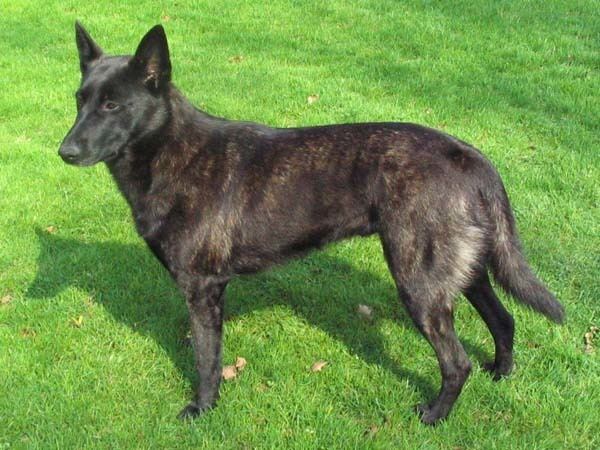 | ||
Other names Dutch ShepherdHollandse Herder Coat Both short and long hair varieties. FCI Group 1, Section 1 Sheepdogs #223 Weight Male: 30–30 kg, Female: 30–30 kg Temperament Reliable, Alert, Obedient, Loyal, Affectionate, Trainable Colors Gray Brindle, Salt & Pepper, Blue Gray, Brindle, Gold Brindle, Silver Brindle Height Male: 57–62 cm, Female: 55–60 cm Similar Anglo‑Français de Petite Vénerie, Beauceron, Airedale Terrier, Malinois dog, Australian Shepherd | ||
Dutch shepherd dog dog breed
The Dutch Shepherd is a herding dog of Dutch origin. They were used by shepherds and farmers who needed a versatile dog, with few demands, and a dog that was able to adapt to a harsh and meager existence.
Contents
- Dutch shepherd dog dog breed
- Origins of the Northern European Shepherds
- Function
- Near Extinction
- Appearance
- Colour
- Temperament
- Health
- Grooming
- Activities
- FCI
- The Dutch Shepherd in the USA
- References
Origins of the Northern European Shepherds
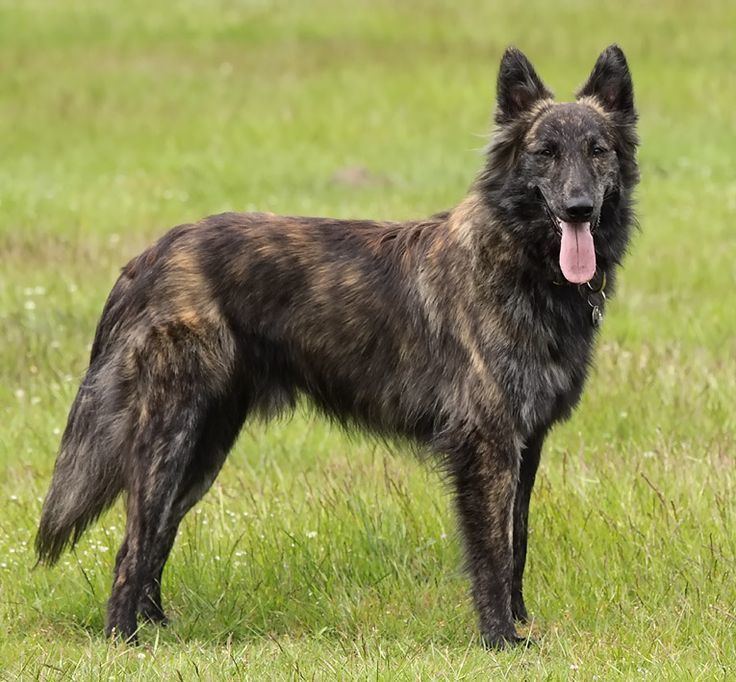
The Dutch Shepherd was discovered as a naturally occurring shepherd's dog type living in the rural areas of the larger region that today includes The Netherlands. When the first breed standard was written in 1898, the coat could be any colour. But, in 1914, it was decided to allow only brindle to distinguish the breed from the then similar German Shepherd and Belgian Shepherd. The breeds eventually diverged into the three distinct breeds as known today. However, the Dutch Shepherd remains nearly the same dog it was more than 100 years ago. Today, the Dutch Shepherd is distinguished from the Belgian and German Shepherds by the details specified in the breed standard, primarily of the head.
Function
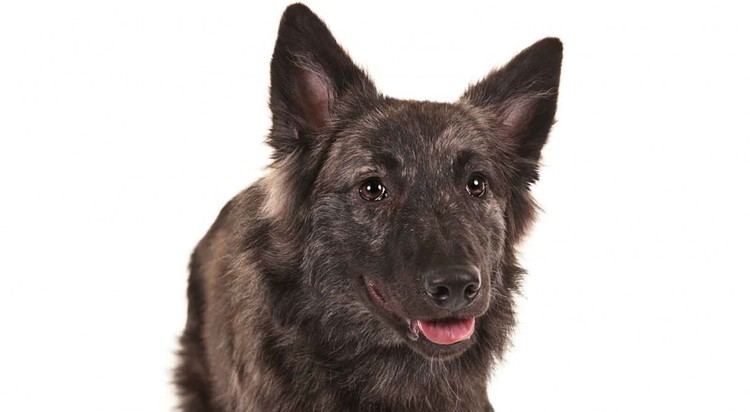
Originally the main function of the Dutch Shepherd was that of a shepherd’s dog in the countryside. From early times, the Dutch had an arable culture that was maintained by flocks of sheep. The dogs had to keep the flock away from the crops, which they did by patrolling the borders of the road and the fields. They also accompanied the flocks on their way to the common meadows, markets and ports.
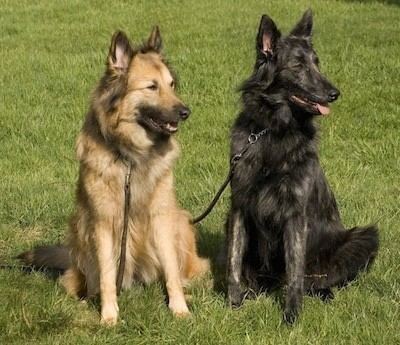
At the farm, they kept the hens away from the kitchen garden, they herded the cows together for milking and pulled the milk carts. They also alerted the farmers when strangers entered the farmyard. Around 1900, sheep flocks had for the greater part disappeared in the Netherlands. The versatile skills of the Dutch Shepherd made him suitable for dog training, which was then starting to become popular. They were then trained and used as police dogs, as search and tracking dogs, and as guide dogs for the blind. They are, however, still capable of herding sheep.
Near Extinction
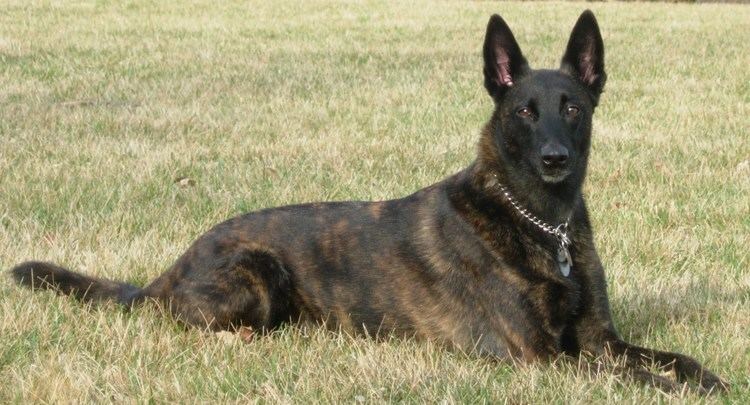
The population of the Dutch Shepherd was greatly reduced due to modern farming techniques nearly eliminating the need for the breed as a sheep tender, and in the 1940s and 1950s the breed was almost exterminated. The Second World War put a stop to breeding of most dog breeds in The Netherlands. Dogs died from lack of food, or were taken to Germany by the German military. Many bloodlines became extinct.
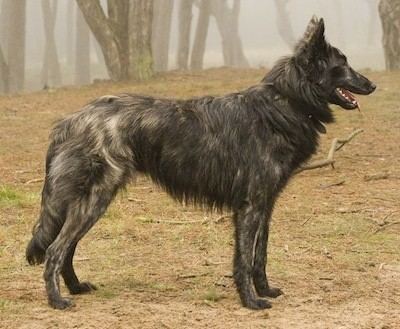
After the war, breeding began anew and new blood was needed to diversify the gene pool. Sometimes dogs of unknown origin were used. The Malinois was used for a time, but the practice was stopped because the buyers of those puppies did not have the same goals as the Dutch Breed Club. In 1959, with permission from the breed club, a Laekenois dog was used to expand the rough-hair population. With time, the popularity of the breed grew and expanded into other countries.
Today the Dutch Shepherd is still a rare breed. The Dutch Breed Club encourages all owners of dogs meeting the minimum conformation standards to breed them, and guidelines are laid out so as to increase their number and diversify the gene pool while preserving the health of the breed.
Appearance
The Dutch Shepherd on average weigh between 50–70 pounds (23–32 kg) and the height varies between 55–63 cm (approximately 22 to 25 inches tall at the withers). Depending on the coat the breed can be distinguished as short-hair, long-hair, or rough-hair.
Short-hair: All over the body, quite hard, close-fitting, with woolly undercoat. Ruff, breeches and tail plume are clearly visible.
Long-hair: All over the body, long, straight, well fitting, harsh to the touch, without curls or waves and with a woolly undercoat. Distinct ruff and breeches. Tail abundantly coated. Head, ears and feet and also the hind legs below the hocks are short and densely coated. The backsides of the forelegs show a strongly developed coat, shortening in length towards the feet, the so-called feathering. No fringes at the ears.
Rough-hair: Dense, harsh tousled coat and a woolly, dense undercoat all over the body except for the head. Upper- and lower lip should be well-covered with hair, the whiskers and beard, and two well defined, coarse rough eyebrows that are distinct but not exaggerated. Furnishings are not soft. The hair on the skull and on the cheeks is less strongly developed. In profile it seems as if the head has a more square appearance. Strongly developed breeches are desirable. Tail is covered all round with hair. The brindle colour may be less pronounced because of the tousled coat.
Colour
Brindle. The basic colour is golden or silver. Golden can vary from light sand- coloured to chestnut red. The brindle is clearly present all over the body, in the ruff, breeches and tail. Too much black is undesirable. A black mask is preferable. Heavy white markings on chest or feet is not desirable.
Temperament
Dutch Shepherds are loyal, reliable, alert, watchful, active, independent, intelligent, and intuitive.
Obedience and discipline can be achieved with remarkable results. Gifted with a true shepherding temperament, they can supposedly work willingly together with their owners and can deal independently with any task they are assigned, being neither aggressive nor shy. They have a strong character and independence passed down from their herding ancestry.
Health
The Dutch Breed Club initiated a hotline in 2008 for reporting health and behavioral problems. Most genetic health problems occur at a low rate in this breed. Confirmed genetic diseases diagnosed in Dutch Shepherd Dogs include allergies (atopy), masticatory myositis, pannus, cryptorchidism, and inflammatory bowel disease. The Orthopedic Foundation for Animals reports hip dysplasia is present at an overall rate of 8.1 percent on 335 dogs evaluated from Jan 1972 through Dec 2016 (while also reflecting a lower 5.1 percent on dogs born between 2011-2015) and elbow dysplasia is present at a rate of 3.7 percent on 246 dogs evaluated from Jan 1972 through Dec 2016.
Within the rough-hair population care should be taken to screen for goniodysplasia before breeding. This is a condition where the outflow of fluid from the eye is restricted and under certain circumstances can cause blindness. The link between genetics and goniodysplasia is uncertain. Two dogs who have a risk of goniodysplasia can still have puppies who are not at risk. The Dutch Breed Club regulations requires the testing for GD for rough-hairs.
Grooming
The short-haired variety needs occasional combing, with the exception during the shedding period in the spring and fall when a daily thorough brushing is needed. The long-haired variety needs to be groomed about once a week, or more frequently depending on work and environment. The rough-hair variety needs to be thoroughly brushed once a week, and twice a year the dead hair will need to be hand stripped.
Activities
The Dutch Shepherd is an active and versatile breed. They compete in dog agility, obedience, Rally obedience, flyball, dock jumping, disc dog, tracking, search and rescue, nosework, weight pulling, along with protection sports such as Schutzhund, French Ring, Belgian Ring, mondioring, PSA and others. In The Netherlands it is still employed as a herder and the instinct is still strong in the breed.
Internationally, the Dutch Shepherd is best known for use in law enforcement under the KNPV program. The Koninklijke Nederlandse Politiehond Vereniging (KNPV), or Royal Dutch Policedog Association, was founded 27 October 1907, as an organization to oversee and test dogs for their suitability for police work. Dutch Shepherds with KNPV titles are sought after candidates throughout the world for police and military use, as well as sport competitors and personal protection dogs. The KNPV began a dog registration program in 2014 for KNPV member dogs, making registration mandatory for all dogs born after 1 April 2013.
FCI
The Fédération Cynologique Internationale (FCI) is an overseeing entity for many international purebred dog breed registries, including the Dutch Kennel Club, Raad van Beheer Association. The FCI itself is not a registry and does not issue pedigrees, instead the FCI has 90 members and contract partners (one member per country) that each issue their own pedigrees and train their own judges. The 'owner' countries of the breeds write the breed standards that are used as reference for judges at shows held in FCI member countries. Some member countries have an open studbook by which dogs can be registered based on appearances and other FCI member countries have closed studbooks. The Dutch studbooks were closed on 1 February 1971. The goal of the FCI is, in part, ‘to protect the use, the keeping and the breeding of purebred dogs in the countries where the FCI has a member or a contract partner’. The United States of America is not an FCI Member or Contract Partner.
The Dutch Shepherd in the USA
The kennel club of registry for the Dutch Shepherd in the United States is the United Kennel Club, having first published their breed standard on 1 January 1995. Established in 1898, the United Kennel Club is the largest all-breed performance-dog registry in the world, registering dogs from all 50 US states and 25 foreign countries. More than 60 percent of its nearly 16,000 annually licensed events are tests of hunting ability, training and instinct. UKC registered Dutch Shepherds successfully compete in conformation, obedience, agility, rally, weight pull, nosework, dock jumping, lure coursing and previously in protection/police dog events through the now defunct Dog Sport program. The UKC reflects more than 1,349 permanently registered Dutch Shepherds in their archives, but indicates the number of active (under the age of 12) Dutch Shepherds total 1,020 dogs (as of 31 December 2016).
As of 2012, the Dutch Shepherd is being recorded by the American Kennel Club in their Foundation Stock Service, accepting pedigrees from some FCI members as eligibility but declining membership to dogs with pedigrees from certain other FCI member countries. FSS breeds are not eligible for AKC registration, however once individually registered under the FSS program, a Dutch Shepherd is able to compete in the AKC companion events of obedience, tracking, agility and rally. The American Dutch Shepherd Association states they maintain a listing of the dogs registered in the American Kennel Club’s FSS database and in 2015 reflected a total of over 150 Dutch Shepherds registered in the USA and Canada. The American Kennel Club board of directors voted their approval on 16 January 2016 of moving the Dutch Shepherd to the Miscellaneous Class effective 1 January 2017 and has designated the American Dutch Shepherd Association as the AKC Parent Club for the breed.
